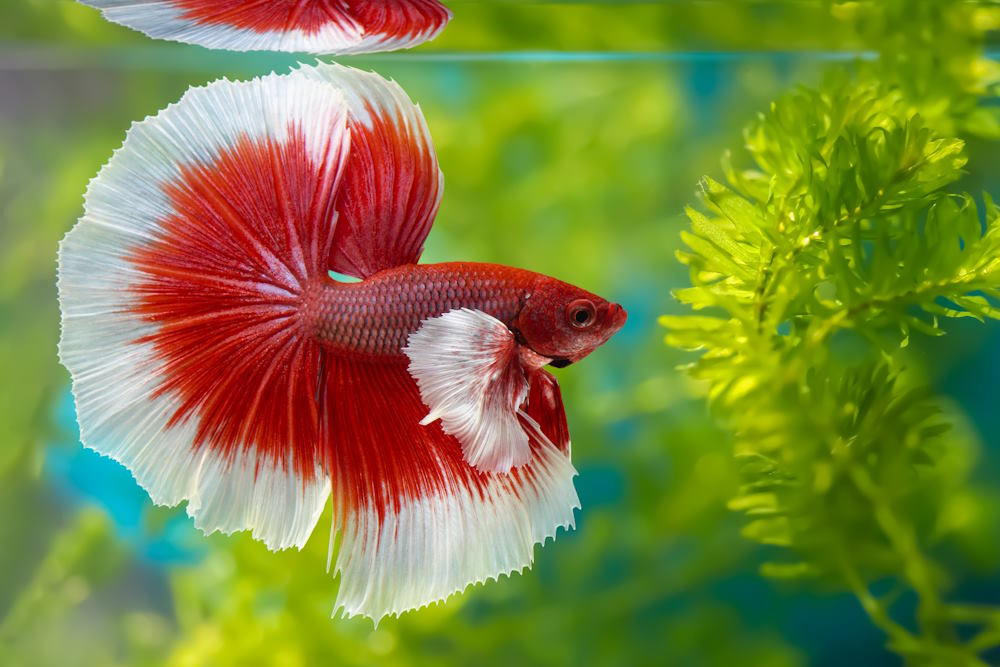How to Breed Betta Fish Effectively: Expert Strategies and Insights for Hobbyists Aiming To Increase Their Betta Collection
Breeding Betta fish requires a nuanced understanding of genes and ecological problems, making it crucial for enthusiasts to approach the process with both persistance and treatment. Developing an ideal reproduction atmosphere, picking the ideal pairs, and observing the details of their courtship actions are foundational steps that can significantly impact the result. Furthermore, the succeeding treatment of the fry is essential for guaranteeing their healthy and balanced growth. As we discover these key elements, it becomes clear that successful breeding is not just concerning the preliminary pairing yet incorporates a broader technique that benefits careful consideration.
Comprehending Betta Fish Genes
Understanding the genes of Betta fish is critical for effective reproduction, as it influences qualities such as shade, fin shape, and habits. Betta fish show a varied variety of colors and patterns, greatly established by their genetic makeup.
In addition to coloration, fin morphology is one more considerable facet of Betta genes (betta fish). The form and size of fins are influenced by various genetics, consisting of those that figure out whether the fins are short, long, or veil-shaped. Comprehending these hereditary variations assists dog breeders anticipate the phenotypic end results of their offspring
In addition, behavior qualities such as aggression and territoriality can likewise be affected by genetics. These habits play an important role in the breeding procedure, as they can affect spawning success and the total character of the resulting fry. By comprehensively comprehending these genetic concepts, dog breeders can make enlightened decisions, ultimately improving their breeding programs and attaining preferable results.
Preparing the Breeding Setting
Producing an optimum reproduction atmosphere is essential for the effective recreation of Betta fish. The initial action in preparing this setting is to pick an ideal breeding container, ideally ranging from 5 to 10 gallons.
Next, consider using a sponge filter or an air stone to offer mild water circulation without producing solid currents that can stress the fish. It is vital to install plants or reproducing cones to supply hiding spots and advertise comfort for the lady during the spawning procedure. Floating plants, such as Java moss or water sprite, can also produce a more natural surroundings while facilitating bubble nest building by the male.
Prior to introducing the breeding pairs, make certain the water is conditioned and devoid of unsafe chemicals, such as chlorine or heavy steels. betta fish. Normal water modifications ought to be carried out to maintain optimum water quality, enhancing the chances of effective reproduction. With these prep work in area, the reproducing setting will certainly support the wellness and wellness of both Betta fish
Choosing Reproduction Pairs
Picking the right reproduction sets is critical for attaining successful Betta fish reproduction. When choosing your reproduction pairs, take into consideration several essential aspects including health, personality, and genes. Healthy Betta fish show vibrant shades, clear eyes, and active habits. Choosing fish that are without disease ensures a better chance of producing practical offspring.
Personality is another essential factor to consider, as Betta fish are known for their hostile Going Here nature. It is advisable to pick a man and female that show compatible personalities to minimize anxiety throughout the reproducing procedure. A calm male can encourage a smoother courtship, while a female that is as well hostile might interrupt the procedure.
Hereditary background also plays a substantial function in the quality of the offspring. Reproducing fish that are genetically diverse can minimize the threat of hereditary health and wellness concerns and improve the general vigor of the fry. It is helpful to look into the lineage of both the man and lady, concentrating on preferable traits such as fin type, color scheme, and size.
The Breeding Refine
The reproduction process of Betta fish requires careful preparation and focus to detail to make certain an effective result. It is crucial to prepare an ideal breeding container, preferably a 5-10 gallon aquarium with a temperature kept at 78-80 ° F. The storage tank should be equipped with a heating unit, filter (preferably sponge type to avoid strong currents), and a lot of marine plants for the female to hide.
Once the atmosphere is set, present the selected reproducing pair to the storage tank, enabling them to acclimate. Observe their habits; the male will present intricate courtship routines, including flaring his fins and developing a bubble nest. If the female shows rate of interest, she will certainly display upright red stripes showing readiness for spawning.
When the woman is official source receptive, the set will certainly involve in a mating embrace, throughout which the male feeds the eggs. Maintaining ideal water problems throughout this period is important for the advancement of healthy Betta fry.
Taking Care Of Betta Fry

Feeding Betta fry is critical, as they call for a diet regimen high in healthy protein. At first, they can be fed infusoria or liquid fry food, transitioning to finely crushed top quality pellets as they expand. Feed little parts several times a day to urge healthy growth without overloading the container with uneaten food.

As they grow, monitor their growth carefully and divide any type of hostile people to avoid damage. More Bonuses By supplying a supporting atmosphere and proper nutrition, enthusiasts can efficiently raise Betta fry right into vibrant, healthy fish, eventually improving their reproduction undertakings.
Conclusion
Successful Betta fish breeding needs meticulous interest to genetic choice, ecological problems, and treatment for the fry. By understanding the genetics of Betta fish and preparing a suitable breeding environment, enthusiasts can improve the chances of producing vivid, healthy children. Selecting compatible reproduction sets and very closely checking the courtship and spawning processes are crucial. Giving ideal care for the fry guarantees their healthy growth, adding to a thriving Betta collection.